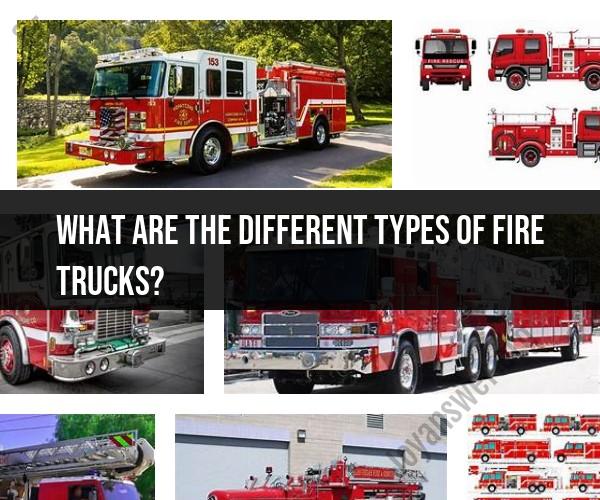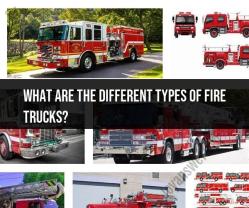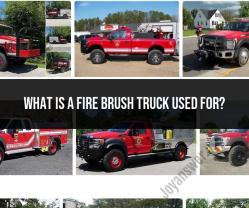What are the different types of fire trucks?
Fire departments use various types of fire trucks to address a wide range of emergency situations. Each type of fire truck is specially designed and equipped for specific tasks and scenarios. Here's an in-depth overview of the different types of fire trucks:
Fire Engine (Pumper):
- The fire engine, often referred to as a pumper, is the most common type of fire truck. It carries a water tank, hoses, pumps, and other equipment for firefighting.
- Fire engines are used for tasks like extinguishing structural fires, supplying water to other firefighting vehicles, and providing emergency medical services (EMS).
Aerial Ladder Truck (Ladder Truck):
- Aerial ladder trucks feature an extendable ladder with a platform (bucket) at the end. They are used for rescues, providing elevated water streams, and gaining access to upper floors of buildings.
- These trucks are equipped with a variety of ground ladders, cutting tools, and specialized rescue equipment.
Quint Fire Truck:
- A quint is a combination of a pumper and an aerial ladder truck. It can perform multiple functions, including firefighting, rescue operations, and providing elevated water streams.
- Quints are versatile and can carry both hoses and an aerial ladder, making them useful in a variety of emergency scenarios.
Rescue Truck:
- Rescue trucks are specially designed for technical rescue operations, such as vehicle extrications, confined space rescues, and swiftwater rescues.
- They carry a wide range of specialized equipment and tools for these complex rescue missions.
Tanker (Tender) Truck:
- Tanker trucks, also known as tenders, transport large quantities of water to areas lacking hydrants or a water supply. They are crucial in rural and wildland firefighting.
- Tankers may also carry foam for extinguishing flammable liquid fires.
Brush Truck (Wildland Fire Engine):
- Brush trucks are designed for wildland firefighting and can navigate off-road terrain. They carry water, hoses, and equipment for extinguishing grass and forest fires.
- They often have high ground clearance and four-wheel drive capabilities.
Hazmat Truck (Hazardous Materials Truck):
- Hazmat trucks are equipped to handle chemical, biological, radiological, and hazardous materials incidents.
- They carry specialized detection and containment equipment and may have decontamination showers.
Airport Crash Truck (ARFF):
- Airport crash trucks are stationed at airports and are designed to respond to aircraft emergencies, including fires and rescues.
- They have powerful firefighting capabilities and can apply foam to suppress aircraft fires.
Light and Air Unit:
- Light and air units provide supplemental lighting at emergency scenes and supply compressed air for breathing apparatus worn by firefighters.
- These units ensure adequate visibility and air supply in challenging situations.
Command Vehicle:
- Command vehicles serve as mobile command centers at emergency scenes. They are equipped with communication and coordination tools for incident management.
Utility Vehicle:
- Utility vehicles are versatile and can serve various purposes, such as transporting personnel and equipment to the scene, carrying additional firefighting tools, or towing trailers.
Fire Boat:
- Fire boats are used for firefighting in maritime environments, including harbors, rivers, and coastal areas. They can deliver water through powerful water cannons.
Each type of fire truck plays a crucial role in the overall firefighting and emergency response efforts of a fire department. The selection and deployment of these vehicles depend on the specific needs and challenges of each incident.



